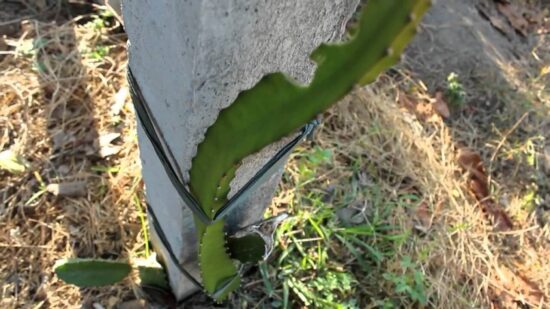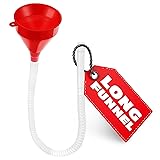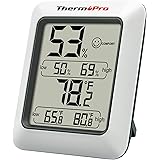Are you perplexed by the mystery of what is devouring your beloved dragon fruit plant? Fret not, for we have the answer! In this article, we will uncover the culprits behind the feasting frenzy and provide you with effective solutions to put an end to their destructive escapades.
If you’ve been wondering, “What is eating my dragon fruit plant?” stick around as we delve into the fascinating world of garden pests and unveil the secrets to protecting your prized dragon fruit from their appetite. So, let’s dive in and bring an end to this plant-chomping mystery!
What is Eating My Dragon Fruit Plant?
Dragon fruit plants are known for their delicious and exotic fruits, but they can also attract various pests and critters that may feast on your plant and hinder its growth. Identifying the culprits behind the damage to your dragon fruit plant is crucial in order to take appropriate measures to protect your plant and ensure its healthy development.
In this article, we will explore the common pests and animals that may be eating your dragon fruit plants and provide effective solutions to mitigate the damage.
Pests that Attack Dragon Fruit Plants
Dragon fruit plants can fall victim to a variety of pests, ranging from insects to rodents. Understanding the behavior and characteristics of these pests can help you address the issue more effectively.
1. Dragon Fruit Beetle
The dragon fruit beetle, also known as the cactus longhorn beetle, is a common pest for dragon fruit plants. The adults feed on the outer layer of the plant, creating scars and holes in the cactus pad. The larvae, on the other hand, burrow through the stem and cause more significant damage.
To control dragon fruit beetles, you can:
- Regularly inspect your plants for signs of infestation.
- Remove and destroy any beetles or larvae found.
- Introduce beneficial insects such as parasitic wasps, which prey on the beetles.
- Apply an organic insecticide specifically designed for dragon fruit beetles.
2. Mealybugs
Mealybugs are small, soft-bodied insects that suck sap from the dragon fruit plant, causing wilting, yellowing, and stunted growth. They also secrete a sticky substance known as honeydew, which attracts ants and promotes the growth of black sooty mold.
To combat mealybugs:
- Inspect your plant regularly, paying close attention to the underside of leaves and areas where mealybugs tend to hide.
- Remove and destroy infested plant parts.
- Introduce natural predators such as ladybugs or lacewings to control the population.
- Use insecticidal soap or neem oil to treat heavily infested plants.
3. Scale Insects
Scale insects are small, immobile pests that attach themselves to the stems and leaves of dragon fruit plants and feed on plant sap. They often appear as small bumps or scales and can cause yellowing, wilting, and stunted growth.
To eliminate scale insects:
- Gently scrape away the scales using a soft brush or cloth.
- Apply horticultural oil or neem oil to suffocate the insects.
- Introduce beneficial insects such as ladybugs or parasitic wasps to control the population.
- Prune heavily infested parts of the plant and dispose of them properly.
4. Snails and Slugs
Snails and slugs are common garden pests that feed on the leaves and fruits of dragon fruit plants. They leave behind silvery slime trails and irregular holes in the plant, leading to significant damage if left unchecked.
To manage snails and slugs:
- Handpick the pests during the evening or early morning hours when they are most active.
- Create barriers using copper tape or diatomaceous earth around the base of the plant to deter them.
- Set up beer traps by burying shallow containers filled with beer near the plant to attract and drown the pests.
- Apply iron phosphate-based slug and snail baits as a last resort.
Read More: About What to Put at Bottom of Fence to Keep Animals Out
Animals that Target Dragon Fruit Plants
Apart from insects and pests, certain animals may also pose a threat to your dragon fruit plants. Understanding their behavior and implementing appropriate measures can help safeguard your plant from their destructive habits.
1. Birds
Birds are attracted to dragon fruit plants, especially when the fruits are ripe. They can peck at the fruits, causing damage and reducing your harvest. Common bird species that target dragon fruit plants include pigeons, starlings, and finches.
To protect your plants from birds:
- Install bird netting or mesh around the plants to prevent birds from accessing the fruits.
- Hang shiny objects such as CDs or reflective tape to scare birds away.
- Use scarecrows or motion-activated devices that emit loud noises or sudden movements to deter birds.
- Plant distracting decoy crops nearby to divert their attention.
2. Rodents
Rodents such as rats and mice can cause significant damage to dragon fruit plants by gnawing on the stems, leaves, and fruits. They can also dig tunnels around the roots, compromising the plant’s stability and nutrient uptake.
To keep rodents away from your plants:
- Remove potential hiding spots such as tall grass or debris near the plants.
- Install fences or barriers around the garden to prevent rodent access.
- Set up traps or bait stations using rodenticides as a last resort.
- Implement regular cleaning and sanitation practices to minimize attractants.
3. Squirrels
Squirrels are notorious for their love of fruits, including dragon fruit. They can nibble on the fruits and cause damage even before they are fully ripe. Squirrels are agile climbers, making it challenging to keep them away.
To deter squirrels from your dragon fruit plants:
- Install motion-activated sprinklers that release bursts of water when squirrels approach.
- Hang aluminum foil strips or wind chimes near the plants to create noise and scare them off.
- Apply commercial squirrel repellents that contain natural deterrents like pepper or predator urine.
- Consider planting other squirrel-preferred crops away from your dragon fruit plants to redirect their attention.
By identifying and addressing the pests and animals that may be eating your dragon fruit plants, you can protect your investment and ensure a healthy harvest. Implementing preventive measures, regular inspection, and appropriate pest control methods will contribute to the overall well-being of your dragon fruit plants.
Read More: About Can Magnolia Trees Be Planted Close to a House?
Frequently Asked Questions (FAQs)
Common pests that can eat dragon fruit plants include fruit flies, aphids, mealybugs, scale insects, and caterpillars.
Fruit flies are small, flying insects that are attracted to ripe or decaying fruit. You may see them hovering around your dragon fruit plant or notice small puncture marks on the fruit.
Aphids are tiny insects that can cluster on new growth, leaves, and stems. Signs of an aphid infestation include distorted or curled leaves, sticky residue (known as honeydew), and the presence of ants.
Mealybugs are small, soft-bodied insects that are covered in a white, powdery wax. They can be found on the stems and leaves of the dragon fruit plant. Look for white, cotton-like masses or small, crawling insects.
Scale insects are small, immobile pests that attach themselves to the stems and leaves of plants. Signs of a scale insect infestation include small, raised bumps on the plant, yellowing or wilting leaves, and a sticky residue.
Caterpillars can chew on the leaves and stems of dragon fruit plants, causing visible damage. Look for irregularly shaped holes, chewed edges, or stripped leaves.
To control pests on your dragon fruit plant, you can use organic methods such as manually removing pests, spraying with insecticidal soap or neem oil, introducing beneficial insects like ladybugs or lacewings, or setting up physical barriers like nets or sticky traps.
Yes, there are natural predators such as ladybugs, lacewings, and parasitic wasps that feed on pests like aphids, mealybugs, and caterpillars. Consider attracting these beneficial insects to your garden to help control pests naturally.
Final Thoughts
Several pests and insects can be responsible for eating your dragon fruit plant. Common culprits include mealybugs, aphids, snails, and slugs. These pests can cause damage to the leaves, stems, and fruits of the dragon fruit plant. To identify the exact pest, carefully inspect your plant for any signs of infestation. Once identified, take immediate action to control and eliminate the pests.
Using organic methods, such as introducing natural predators or using neem oil, can effectively manage the pest problem. Regularly monitoring your plant and practicing good gardening practices will help ensure the health and vitality of your dragon fruit plant. So, if you’re wondering what is eating your dragon fruit plant, take a close look for any signs of pests and address the issue promptly.
Auto Amazon Links: No products found.
Perfect Plants Christmas Tree Saver 8oz. | Easy Use Xmas Tree Preserver Food | Have Healthy Green Christmas Trees All Holiday Season
$7.99 (as of December 25, 2025 06:40 GMT +00:00 - More info- Product prices and availability are accurate as of the date/time indicated and are subject to change. Any price and availability information displayed on [relevant Amazon Site(s), as applicable] at the time of purchase will apply to the purchase of this product.
FirEver Pure Christmas Tree Food | Preserver Additive & Season Extender for Live Xmas Trees | Keep It Green, Reduce Needle-Drop | Miracle Freshness (8 oz)
$9.16 (as of December 25, 2025 06:40 GMT +00:00 - More info- Product prices and availability are accurate as of the date/time indicated and are subject to change. Any price and availability information displayed on [relevant Amazon Site(s), as applicable] at the time of purchase will apply to the purchase of this product.
Wilt-Pruf® Christmas Tree/Cutting Preserver Spray |Preserves Christmas Trees, Wreaths, Garlands, Cuttings and Carved Pumpkins | Reduces Needle Drop | Keeps Cut Trees Fresh Longer | Natural (32 oz)
$21.99 (as of December 25, 2025 06:40 GMT +00:00 - More info- Product prices and availability are accurate as of the date/time indicated and are subject to change. Any price and availability information displayed on [relevant Amazon Site(s), as applicable] at the time of purchase will apply to the purchase of this product.
Transmission Funnel - 3'' Wide 23'' Long Funnel with Hose – Flexible, Reusable, No Leak Design Featuring Elastic Long Hose | Long Funnel for Oil, Gas, Coolant, Automotive and Garage Applications
$7.95 (as of December 25, 2025 06:40 GMT +00:00 - More info- Product prices and availability are accurate as of the date/time indicated and are subject to change. Any price and availability information displayed on [relevant Amazon Site(s), as applicable] at the time of purchase will apply to the purchase of this product.
Rocky Mountain Goods Christmas Tree Food - 8 oz Tree Preservative - Reduce Needle Drop - Greener Scent - Fir, Pine, Spruce Trees - Extend Tree Life
$9.95 (as of December 25, 2025 06:40 GMT +00:00 - More info- Product prices and availability are accurate as of the date/time indicated and are subject to change. Any price and availability information displayed on [relevant Amazon Site(s), as applicable] at the time of purchase will apply to the purchase of this product.
Muddy Mat® | Super Absorbent Door Mat Indoor, Microfiber Quick Dry Chenille Entryway Rug, Non-Slip Front Door Mat, Indoor Mats for Entryway, Machine Washable Pet Rug, Grey 30"x19"
$24.95 (as of December 25, 2025 12:41 GMT +00:00 - More info- Product prices and availability are accurate as of the date/time indicated and are subject to change. Any price and availability information displayed on [relevant Amazon Site(s), as applicable] at the time of purchase will apply to the purchase of this product.
OLANLY Dog Door Mat for Muddy Paws 30x20, Absorbs Moisture and Dirt, Absorbent Non-Slip Washable Doormat, Quick Dry Chenille Mud Mat for Dogs, Entry Indoor Entryway Carpet for Inside Floor, Grey
$9.99 (as of December 25, 2025 12:41 GMT +00:00 - More info- Product prices and availability are accurate as of the date/time indicated and are subject to change. Any price and availability information displayed on [relevant Amazon Site(s), as applicable] at the time of purchase will apply to the purchase of this product.
Zevo Flying Insect Trap Official Refill Cartridges - Fits Both Zevo Trap & MAX Indoor Fly Trap - Authentic Trap+Lock Technology to Catch Gnats, House & Fruit Flys (4 Official Refill Cartridges)
$14.97 (as of December 25, 2025 12:41 GMT +00:00 - More info- Product prices and availability are accurate as of the date/time indicated and are subject to change. Any price and availability information displayed on [relevant Amazon Site(s), as applicable] at the time of purchase will apply to the purchase of this product.
TERRO Ant Killer Bait Stations T300B - Liquid Bait to Eliminate Ants - Bait System - 12 Count Stations for Effective Indoor Ant Control
$10.88 (as of December 25, 2025 12:41 GMT +00:00 - More info- Product prices and availability are accurate as of the date/time indicated and are subject to change. Any price and availability information displayed on [relevant Amazon Site(s), as applicable] at the time of purchase will apply to the purchase of this product.
ThermoPro TP50 Digital Hygrometer Indoor Thermometer Room Thermometer and Humidity Gauge with Temperature Humidity Monitor
$11.99 (as of December 25, 2025 12:41 GMT +00:00 - More info- Product prices and availability are accurate as of the date/time indicated and are subject to change. Any price and availability information displayed on [relevant Amazon Site(s), as applicable] at the time of purchase will apply to the purchase of this product.











